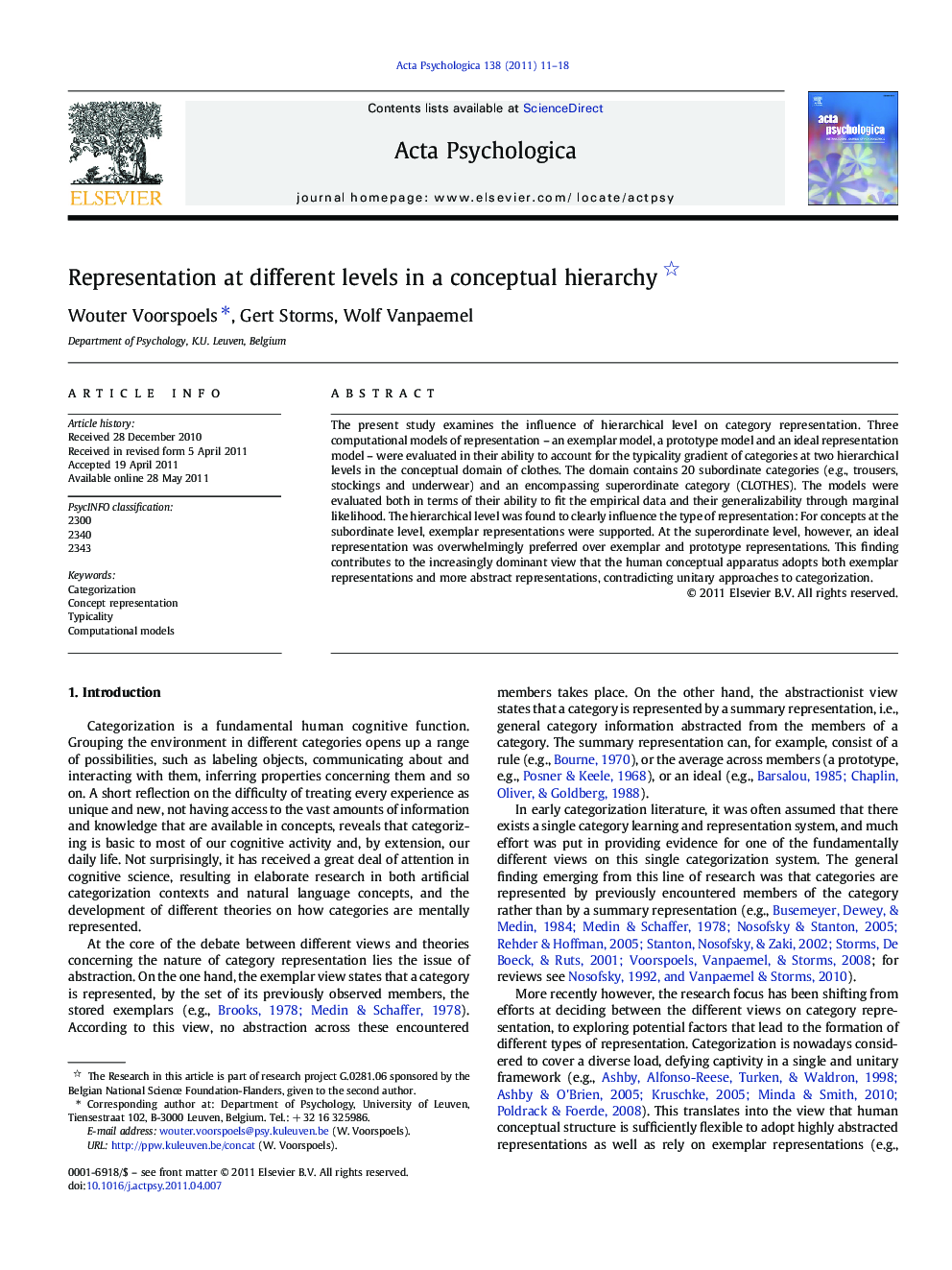| Article ID | Journal | Published Year | Pages | File Type |
|---|---|---|---|---|
| 920165 | Acta Psychologica | 2011 | 8 Pages |
The present study examines the influence of hierarchical level on category representation. Three computational models of representation – an exemplar model, a prototype model and an ideal representation model – were evaluated in their ability to account for the typicality gradient of categories at two hierarchical levels in the conceptual domain of clothes. The domain contains 20 subordinate categories (e.g., trousers, stockings and underwear) and an encompassing superordinate category (CLOTHES). The models were evaluated both in terms of their ability to fit the empirical data and their generalizability through marginal likelihood. The hierarchical level was found to clearly influence the type of representation: For concepts at the subordinate level, exemplar representations were supported. At the superordinate level, however, an ideal representation was overwhelmingly preferred over exemplar and prototype representations. This finding contributes to the increasingly dominant view that the human conceptual apparatus adopts both exemplar representations and more abstract representations, contradicting unitary approaches to categorization.
Research highlights► Examined the influence of hierarchical level on category representation. ► Three computational models of representation: exemplar model, prototype model and ideal model. ► Tested in categories at two hierarchical levels: subordinate level and superordinate level. ► Data support exemplar model at subordinate level and ideal model at superordinate level. ► Provides evidence that human conceptual system adopts different types of representation.
